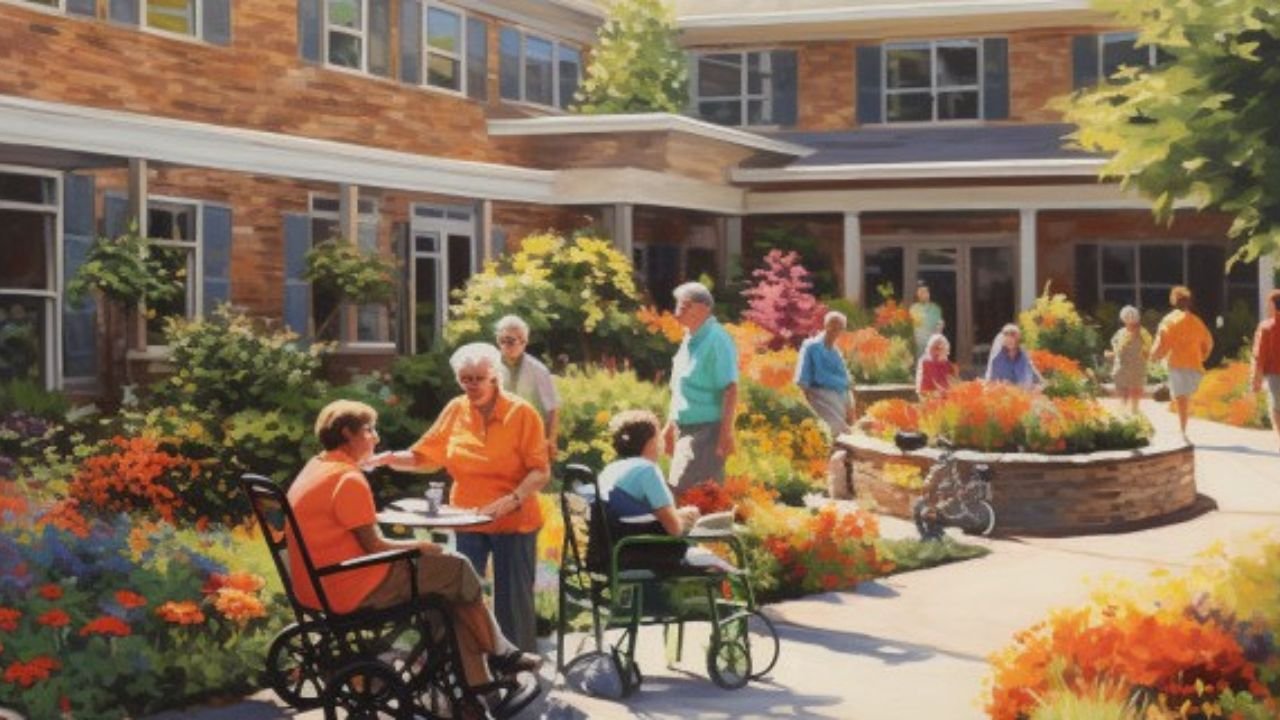As we age, finding the right support for daily living can become essential. And, that’s where assisted living comes in.
Assisted living communities offer a balance between independence and necessary assistance. They provide seniors with both personal care and a vibrant social environment.
In this guide, we’ll cover everything you need to know about assisted living. Understanding different aspects can bring peace of mind to families and seniors alike.
Let’s dive into the ultimate guide to assisted living. Read further!
Understand What Is Assisted Living
Assisted living is a type of senior living that provides a blend of independence and support. Residents in assisted living communities receive help with personal care needs such as:
- bathing
- dressing
- medication management
They can receive this care while still enjoying private living spaces. Assisted living facilities focus on creating a comfortable, home-like environment. And, they promote dignity and independence for seniors.
These communities often have amenities like:
- dining services
- social activities
- transportation options
Assisted living is ideal for those who need some support but don’t require full-time medical care.
Who Can Benefit from Assisted Living?
Assisted living is designed for seniors who need assistance with daily activities but want to maintain some independence. It’s a great option for those who may struggle with tasks like:
- cooking
- cleaning
- managing medications
Seniors who may be lonely or isolated can also benefit from the social connections and sense of community that assisted living offers. This setting also provides peace of mind for families. And, this comes by knowing that their loved ones have access to caregiver services as needed.
Compare Assisted Living vs. Nursing Homes
Both assisted living and nursing homes provide senior care. But, they serve different needs. Assisted living focuses on supporting independence by helping with daily activities. Nursing homes offer comprehensive medical care for those with more complex health issues.
Residents in assisted living typically don’t require constant medical attention. Nursing home residents need continuous monitoring and support.
Nursing homes are often more clinical. Assisted living communities aim to create a more home-like and social environment. Choosing between these options depends on the level of care a senior requires.
Types of Services Offered in Assisted Living
Assisted living communities offer a variety of services designed to enhance quality of life. These include:
- personal care assistance
- medication management
- transportation
- social activities
Many communities also offer wellness programs, including fitness classes. And, some even provide on-site healthcare services.
Dining is usually included, with meals tailored to meet dietary needs. The goal is to ensure residents receive well-rounded care and enjoy a fulfilling lifestyle. Thus, making assisted living a holistic choice for senior living.
Cost of Assisted Living and Financial Considerations
The cost of assisted living varies depending on location, services offered, and level of care needed. In general, assisted living costs cover:
- housing
- meals
- personal care
- other amenities
But, additional services may come with extra fees. Some families use savings, insurance, or long-term care policies to help cover expenses. There are also state and federal programs that may offer financial assistance. Planning ahead and researching payment options can make assisted living more affordable.
How to Choose the Right Assisted Living Community
Choosing an assisted living community requires careful consideration of personal needs and preferences. Start by assessing the level of care needed. Then, look for communities that offer specific services that match those needs.
Tour potential communities to get a feel for the:
- environment
- amenities
- quality of care
Ask questions about:
- staff qualifications
- emergency procedures
- the community’s approach to personal care
A good fit will feel welcoming and offer the right balance of support and independence.
The Role of Caregivers in Assisted Living
Caregivers play a crucial role in assisted living by providing support and assistance to residents. These caregivers help with tasks like:
- dressing
- bathing
- medication management
- mobility assistance
They are trained to offer compassionate care that respects each resident’s independence while meeting their personal needs. Caregivers also provide emotional support. This can help build relationships that foster trust and comfort. Their role is central to creating a safe, supportive environment for senior personal care.
Assisted Living Amenities and Lifestyle
Assisted living communities are designed to enrich the quality of life with a wide array of amenities and lifestyle offerings. Residents can enjoy features like:
- dining halls
- fitness centers
- libraries
- social areas
These are places for gatherings and activities. Many communities organize events, outings, and classes to keep residents active and engaged with one another. Whether you are looking for a senior living in Milwaukee, WI, or in another city, these amenities help create a vibrant, fulfilling lifestyle.
Assisted living offers a blend of personal care and recreational opportunities. Thus, making it an ideal option for seniors who want both support and independence.
The Importance of Social Interaction in Assisted Living
Social interaction is a vital part of life in assisted living communities, helping seniors maintain a strong sense of community and connection. Many communities host regular events, clubs, and classes to promote interaction among residents.
Social connections can improve mental health, reduce feelings of isolation, and contribute to overall happiness. Assisted living communities encourage friendships and offer spaces where residents can gather and engage with each other. This social support system is often one of the biggest benefits of choosing assisted living.
Health and Wellness Programs in Assisted Living
Assisted living communities often prioritize health and wellness by offering various programs and services. Fitness classes, nutritional counseling, and wellness checks are common features. Some communities even offer on-site healthcare services, like physical therapy or visiting medical professionals.
Wellness programs are designed to keep residents active, healthy, and engaged in managing their well-being. These programs play a key role in supporting both physical and mental health in assisted living.
Find the Right Assisted Living for Your Needs
Assisted living is a supportive, enriching option for seniors who need help with daily activities. This helps them while their goal is to maintain a level of independence.
Assisted living communities aim to create a balanced lifestyle tailored to individual needs. From understanding the costs to selecting the right community, this guide covered the essential points you need to make informed decisions about senior living.
Understanding the options available can lead to a fulfilling, comfortable experience in senior care. This is whether it’s for yourself or a loved one.
Should you wish to read more topics, head to our blog page. We’ve got more for you!











